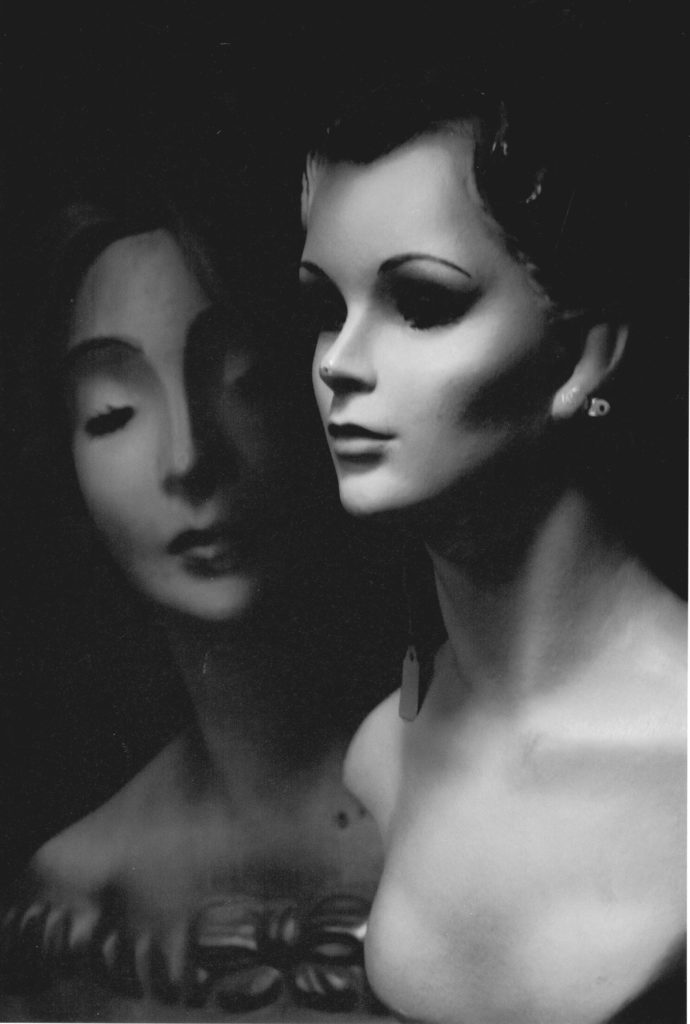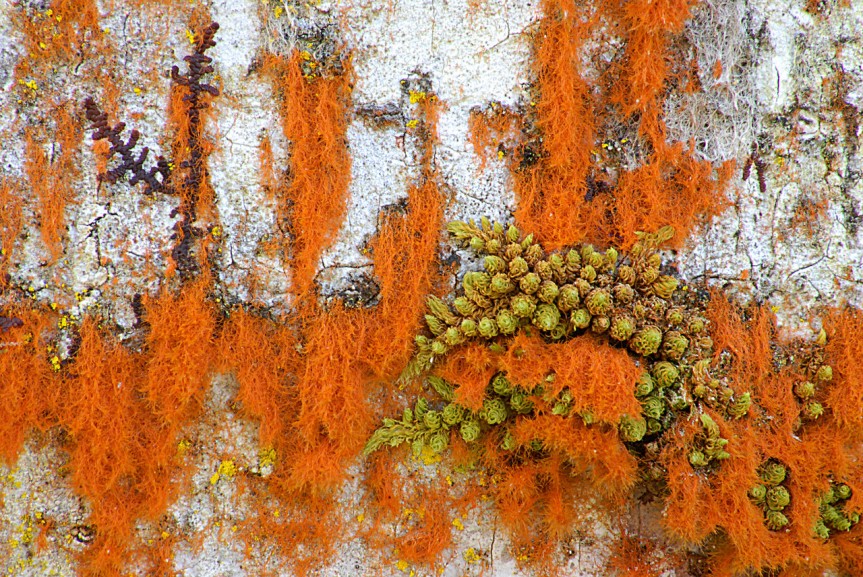 Kristen Neveu is an Evanston artist who is the latest to be featured in our ongoing exhibition series Local Art @ EPL. A painter and collage artist whose work has shown at Woman Made Gallery, the Beverly Hills Art Fair, Evanston Made, and in the personal collection of Community actor Joel McHale, Neveu threads Americana and nostalgia into her mixed media pieces to create “patterned, patchwork storybooks that embody a yearning for the past, with connections to possibilities for the future.” You can catch her show through the end of April on the 2nd floor of EPL’s Main Library and meet her at a closing reception on Thursday, April 27 from 6-8 pm. You can also find more of Neveu’s work by visiting her website, and we recently spoke with her via email about making art after her day job, her intuitive creative process, and the friendly Evanston art scene.
Kristen Neveu is an Evanston artist who is the latest to be featured in our ongoing exhibition series Local Art @ EPL. A painter and collage artist whose work has shown at Woman Made Gallery, the Beverly Hills Art Fair, Evanston Made, and in the personal collection of Community actor Joel McHale, Neveu threads Americana and nostalgia into her mixed media pieces to create “patterned, patchwork storybooks that embody a yearning for the past, with connections to possibilities for the future.” You can catch her show through the end of April on the 2nd floor of EPL’s Main Library and meet her at a closing reception on Thursday, April 27 from 6-8 pm. You can also find more of Neveu’s work by visiting her website, and we recently spoke with her via email about making art after her day job, her intuitive creative process, and the friendly Evanston art scene.
Evanston Public Library: Can you tell us a little about your background as an artist? How did you get started in art? Was there something specific in your life that sparked a need to create? What drove you in the beginning? What drives you now?
Kristen Neveu: I didn’t start making art until after college and after I started working my 9-5 job. I was a Communication Studies major in college with a minor in Anthropology. I moved to Chicago and got a job at Tony Stone Images (which a few years later turned into Getty Images once it was purchased). I was a Photo Researcher. It was a somewhat creative job, but I felt I needed something else. The office job situation always makes me want to create instead of watching television when I get home; it’s like I need to unwind or empty my head and escape. Art is therapeutic to me.
Also, growing up, I had a musical outlet in that I played the piano, sang in choirs, played the clarinet… and I think I was trying to replace that outlet.

EPL: How do you describe your collages and paintings? Do you see yourself as fitting in with any particular artistic movements or styles? Do you work in any other mediums?
KN: My paintings and collages are intuitive and I don’t plan out what I’m doing; I just jump in. I paint over layers if it’s not turning out the way I want. I’ve been told the patterns in my work remind people of Gustav Klimt, and while I like his work, I wasn’t inspired by him in my work. I also take photos and have had a show that featured my photos of classic cars along with collages. Often, I use my own photos in collages too.
EPL: Can you take us through your creative process for a specific painting?
KN: I start by making a layer or two of paint and smudging it for patterns or adding drops of water. I then build patterns from the marks that are made on the canvas. Working bottom to top, I build winding patterns with circular or square shapes that evolve into floral shapes at times. I then figure out my title or what I’m addressing in that particular painting or collage and if it’s collage, fit in my figures or objects. Next, I work with the background colors or paint over patterns if there’s just too much going on. I love subtracting work once it’s there to find a more beautiful pattern.
EPL: What are your future goals and plans as an artist?
KN: I’ll keep creating art as long as I can. It makes me sane and gives me happiness and balance. I submit my work to galleries and shows, and I work with interior designers on projects. I still have my day job, but it gives me structure and I can work at night and on weekends. With the day job I’m not stressed as much to worry about creating work that I think will need to sell and be commercially successful.
EPL: How do you find Evanston and the Chicagoland area as a place to work and exhibit as an artist? What inspires you as an artist about the community where you live?
KN: It’s a friendly environment for artists in Evanston and Chicagoland. I know a lot of artists from my years here, and I reach out to them a lot. Next month I’m exhibiting at Swell Gallery in West Dundee, and one of the owners of the gallery I knew back in the day from Around the Coyote in Wicker Park.
Interview by Russell J.








 David Pritchett is an Evanston educator and photographer who made his
David Pritchett is an Evanston educator and photographer who made his 





